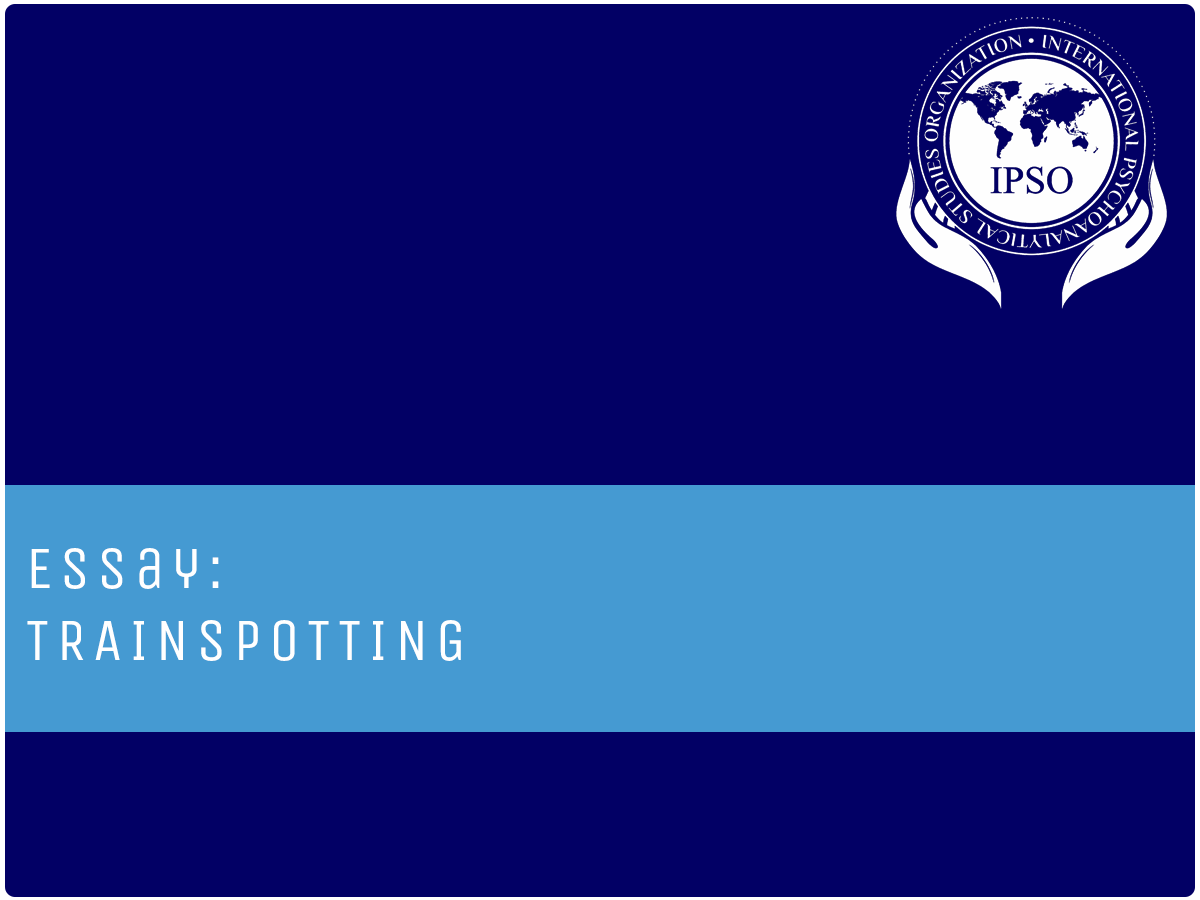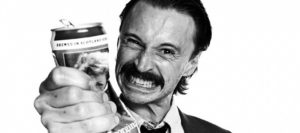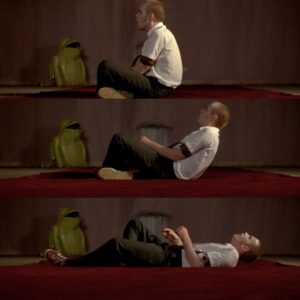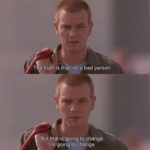
Essay: Trainspotting
Was that his last picket? This was the first question I asked myself at the end of the film, wanting to answer yes, believing that Renton finally managed to get off drugs and change, be clean of heroin, have a job, a family, buy a television, a washing machine, a car, have good health, low cholesterol, dental insurance, a house, casual clothes, children, walks in the park, family Christmas, “survive, looking forward until the day I die” (Boyle, 1996).
In the following essay, I will return to some aspects of the film Trainspotting that seem relevant to me to answer the question with which I began this article. Likewise, I will try to support the eventual answer according to the readings that I have reviewed in the psychopathology seminar, passage to the act.
 The film begins by marking the rhythm in which these characters live, running or rather fleeing, being persecuted by the authority or from another point of view, due to the urgency of the desire to consume drugs. In this case, the heroine, who is the co-star, introduces herself through the tittle of the film, Trainspotting. If I just take the word “train” it leads me to the following reflection: The train is the drug, the actors are the passengers (passage to the act), and the heroine is the one that makes you travel as fast as the train.
The film begins by marking the rhythm in which these characters live, running or rather fleeing, being persecuted by the authority or from another point of view, due to the urgency of the desire to consume drugs. In this case, the heroine, who is the co-star, introduces herself through the tittle of the film, Trainspotting. If I just take the word “train” it leads me to the following reflection: The train is the drug, the actors are the passengers (passage to the act), and the heroine is the one that makes you travel as fast as the train.
In this way, addiction is glimpsed as a response to the lack of ability to tolerate affects (Johnson, 2000). There are several examples: among them, when Renton chooses not to choose his life or, and this one seemed to me the most cruel and painful, when Allison realizes that her baby is dead and she cannot deal with affection, so she asks Renton to immediately inject her with heroin. We could refer this to what Khantzian (1985) describes as a lack of self-control, as a defect of the Self, a regulation function that has never been developed, due to a lack of internalizations which limits the capacity of the Self to take care of itself and therefore of someone else (cited in Johnson, 2000).
Although, the film does not give a complete background of why, when, or how it happened that Renton began to use heroin, it is possible to think about the genetic as well as the environmental aspects that motivated him. Both parents were addicted to cigarettes, a socially accepted addiction. As well as his friends: Tommy, Spund, Sick Boy and BeBig, who in a contradictory way say: “I’m not going to poison my body with those chemicals” (Boyle, 1996), accompanying this sentence with a drink of alcohol.
Tommy’s character, who at first seemed to be the only one without a drug problem, was the first to die from a stroke that occurred because of excessive drug use. Tommy started using drugs after his girlfriend left him. According to the modular-transformational approach, this speaks of a specific pathological level, where, due to a distressing state, the drug use acquires a symbolic value, with a relationship between the type of suffering and the drug consumed, in this case, heroin. Similarly, I hypothesize that the thematic content of his psychic suffering that motivated him to take drugs could have been separation anxiety (Ingelmo, Ramos, Méndez & González, 2000).

On the other hand, the character of BeBig is, as I mentioned, a subject with an addiction problem although not to heroin, but to alcohol and cigarettes. An antisocial personality disorder could be identified in him, with features of narcissistic disorder (Kernberg, 2004). One could infer this from observing his criminal behaviors, such as an armed robbery in a jewelry store and in a drugstore. Other behaviors of him are grandiosity, exhibitionism, narcissistic rage, for example when starting a fight with other people for a simple touch or a little push, and an attitude of superiority, recklessness, and ambition. To explain this, Dodes (1990) states that the intense aggressive impulse arises to restore a sense of power, after the narcissistic wound of feeling helpless or impotent. So his implacable and limitless character can be explained by the presence of a narcissistic rage bound to his addiction (cited in Johnson, 2000).
Respect to the character of Sick Boy, he was described by Renton as a person who could not be trusted, since he was dedicated to selling drugs, he was a pimp, he used heroin. Apparently, in his moments of lucidity, he tried to show himself as a person who likes to philosophize, but this was only ahis way of manipulating others to get high. Therefore, these characteristics could be referred as well to an antisocial personality disorder, where there is a tendency to manipulate, lie, steal, cheat and engage in prostitution, just to name a few (Kernberg, 2004).
 In addition to the above, there is our main character, Renton who, although clean from heroin use, never stopped consuming other substances; therefore the addiction was still present. However, heroin was his biggest problem, which even brought him close to death, when after an overdose he experienced the hallucination of being in a kind of funeral that left him in the hospital. After leaving the hospital, Renton screamed and begged for one “last” picket. In relation to this, Bleichmar (1999) refers that, in the face of desire, a particular representation of the Self is activated, marked by a sensation of impotence and incapacity precisely respect to the self efficacy about the possibility to the desire to consume (cited in Ingelmo, Ramos, Méndez and González, 2000). This pushed Renton to beg again and again for a picket, pretending at the same time to convince others about his self control, ensuring that that would be the last.
In addition to the above, there is our main character, Renton who, although clean from heroin use, never stopped consuming other substances; therefore the addiction was still present. However, heroin was his biggest problem, which even brought him close to death, when after an overdose he experienced the hallucination of being in a kind of funeral that left him in the hospital. After leaving the hospital, Renton screamed and begged for one “last” picket. In relation to this, Bleichmar (1999) refers that, in the face of desire, a particular representation of the Self is activated, marked by a sensation of impotence and incapacity precisely respect to the self efficacy about the possibility to the desire to consume (cited in Ingelmo, Ramos, Méndez and González, 2000). This pushed Renton to beg again and again for a picket, pretending at the same time to convince others about his self control, ensuring that that would be the last.
The film ends with the same speech Renton began with, leaving me with the small hope that this time it will be different and that at the end, with the money he got from the drug sale, he will be able to lead “a normal life”. However, following the syntax with which he expresses himself, he hints at the disorganization of this thought: no pauses or rest, accelerated all the time, walking towards the day of his death. This leads me to think that this could precisely be a representation of how he lives, without restraint and limits.
 Therefore, answering the question I posed at the beginning of the essay, would that have been his last picket line? I dare to answer: no, surely that was not the last one, because as he referred to it: “one goes from pickets to pickets” (Boyle, 1996). In this way, Renton injected the viewer with a sliver of hope, enough to believe that this circumstantial event produced a change in his structure, motivated him to change and to have a life free from the world of drugs. However, believing in this would be just an effect of the negation mechanism.
Therefore, answering the question I posed at the beginning of the essay, would that have been his last picket line? I dare to answer: no, surely that was not the last one, because as he referred to it: “one goes from pickets to pickets” (Boyle, 1996). In this way, Renton injected the viewer with a sliver of hope, enough to believe that this circumstantial event produced a change in his structure, motivated him to change and to have a life free from the world of drugs. However, believing in this would be just an effect of the negation mechanism.
María del Socorro López Olmedo.
Referencias
Boyle, D. (1996). Trainspotting. Film4 Productions y Figment Films.
Ingelmo, J., Ramos, M. I., Méndez, J. A. y González, E. (2000). El enfoque Modular-Transformacional de la psicopatología: su aplicación al problema de la dependencia de drogas. Aperturas psicoanalíticas (5).
Johnson, B. (2000). Tres puntos de vista sobre la adicción. Aperturas psicoanalíticas (6).
Kernberg, O. (2004). La agresión en las perversiones y en los desórdenes de personalidad. Buenos Aires: Paidós.


